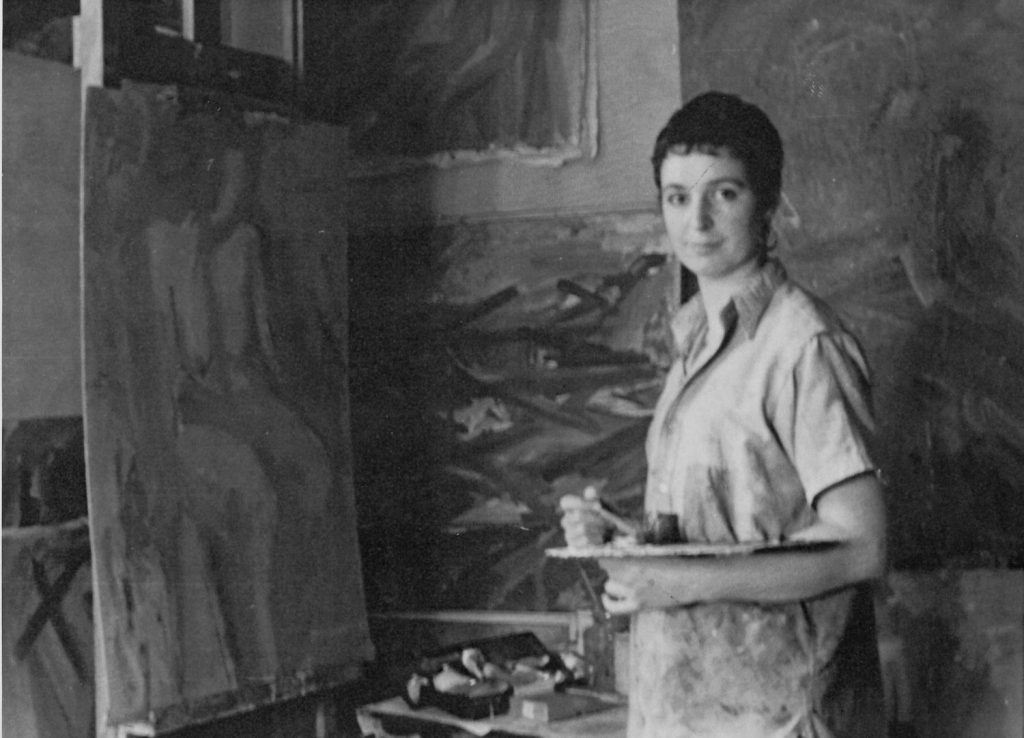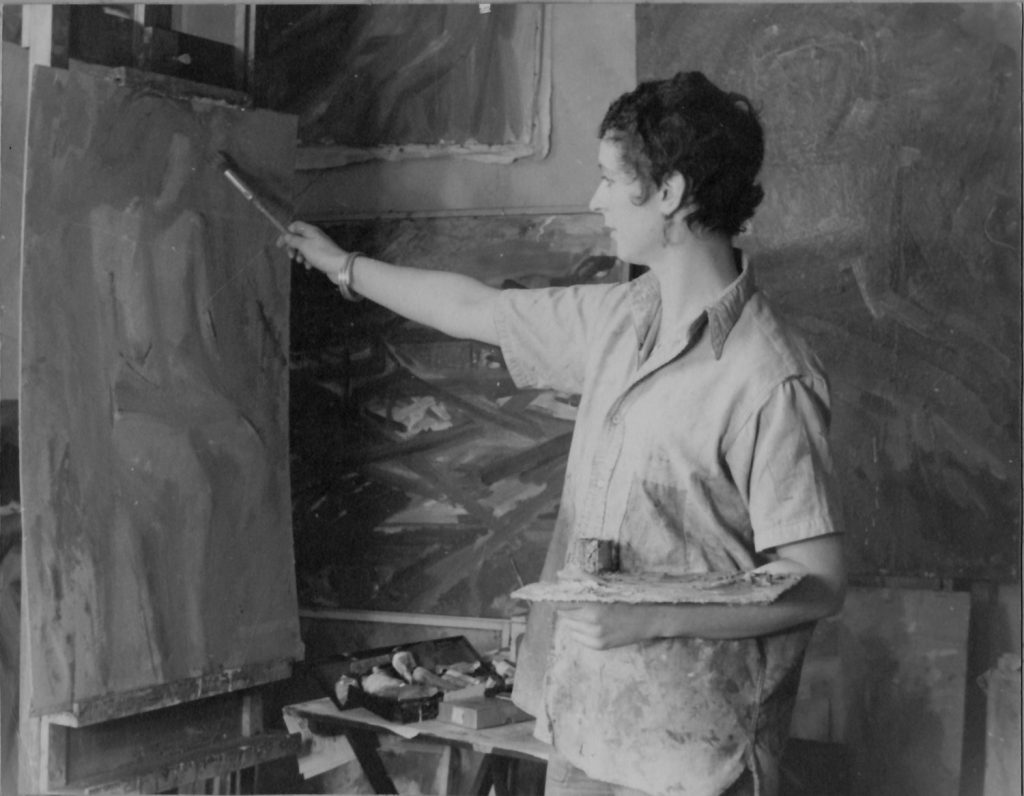
David Bomberg was an artist from the golden age of the Slade School of Art in London where he studied next to Isaac Rosenberg, Dora Carrington, Mark Gertler, C R W Nevinson, Paul Nash and Stanley Spencer to name a few. In the years just before the First World War, Bomberg went from an artist in the Camden Town style to being part of the radical scene of Vorticism; angular shapes of abstracted forms, his pictures at this time made him famous but also alienated the public.
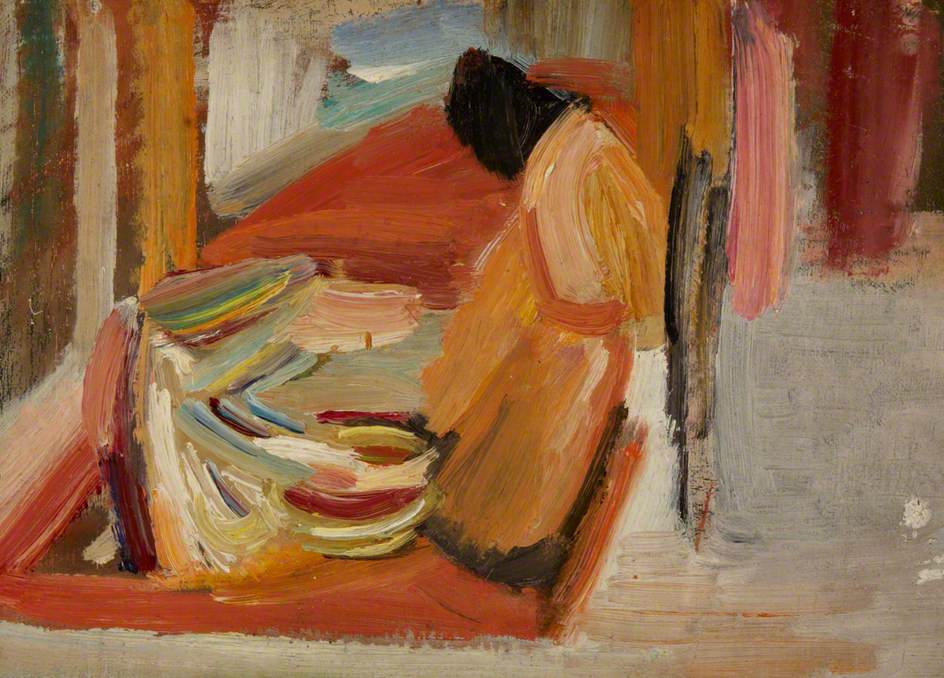
The Sarah Rose Collection at London South Bank University
He married his first wife Alice Mayes before setting off to the frontline in 1916. The bubble of the Vorist movement popped after the First World War. Bomberg went on to take the abstracted forms and work his paintings into something new and unlike the other artists. He worked with a few lines of paint to make his painting. It took another forty years for his work to be seen as the radical movement that it was. Due to that after WWI his work didn’t command the same level of attention or patronage from London Galleries to become respected, he spent most of his life on borderline poverty and on the charity of his sister Kitty, he was working in Dagenham at the local art school in 1944, during the Second World War when there were fewer critics around to his teaching and this is where he first met Dorothy Mead, a new young student.
Mead was born in London and adopted at three months old to a family in Walthamstow who moved to Romford when Mead was aged three. In 1944 She studied at South East Essex School of Art at Dagenham where she first encountered Bomberg. Mead took Bomberg’s teaching and added a feminine intuition for form and beauty. Her work falls into that cliché of being better in the flesh, photographic reproductions do not do justice to confidently she handled paint. The works are planned out but then executed quickly in oil paint, so that there is a rhythmic movement in the brush strokes.
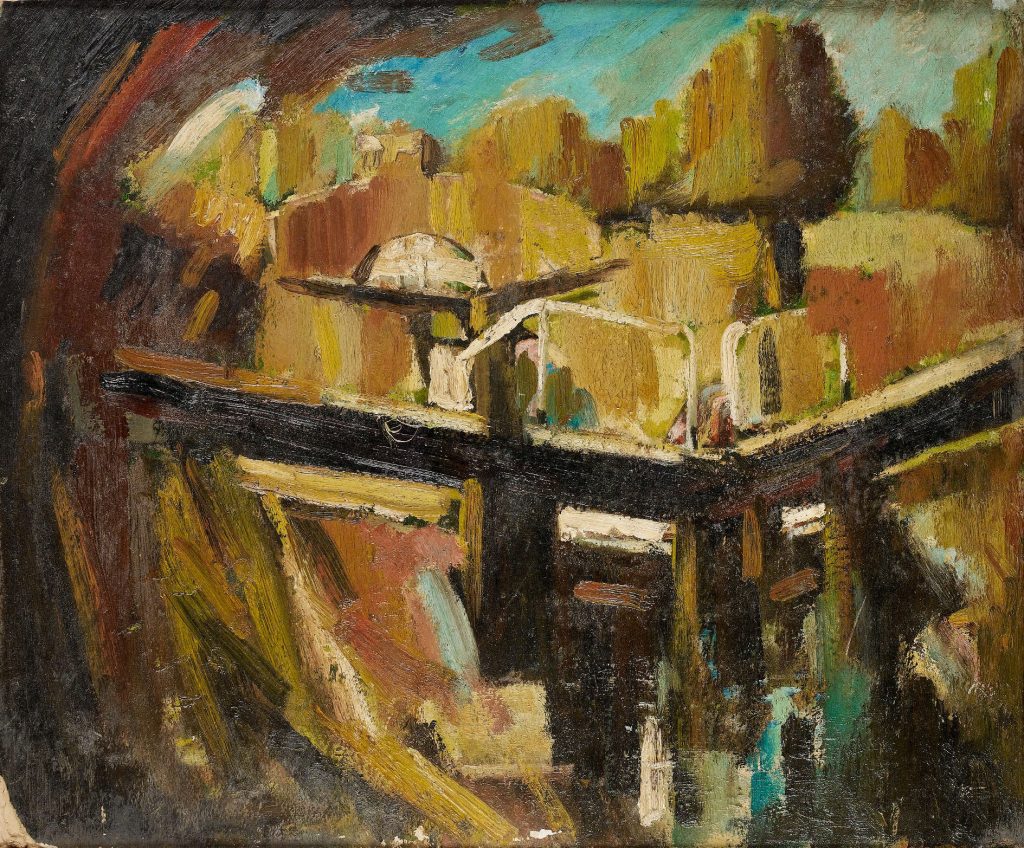
After a year of teaching from Bomberg at Dagenham, Mead followed him to the City Literary Institute in London where Cliff Holden was also studying under Bomberg too, and then Bomberg taught his two pupils at the Borough Polytechnic in 1946. Holden then organised the founding of the Borough Group, a collective of artists (mostly at the Polytechnic) inspired by the teaching of Bomberg.
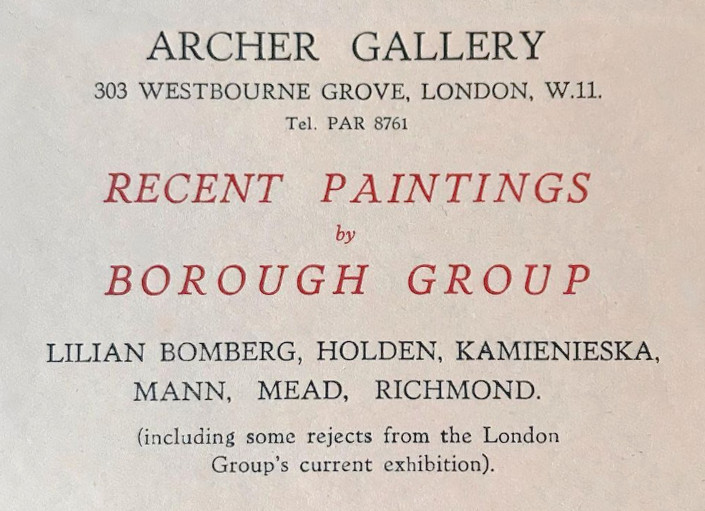
Members included Bomberg and his second wife Lilian Holt; as well as students: Leslie Marr, Dennis Creffield and Dorothy Mead. This allowed them to get more attention when exhibiting together over the coming years. As a teacher Bomberg ignored perspective in favour of composition. His training at the Slade had given him a respect for the old master paintings. Alice Mayes wrote “David explained that the modern pictures had their beginning with the Old Masters and Michael Angelo was the chief of these”.
Philip Vann – Dorothy Mead, 2014

The Borough Group’s activates only lasted until 1951 when many of them graduated and Bomberg moved on as well.
In the early 1950s Mead spent two years in Spain with Clifford Holden, her partner, after a tour of Paris and Amsterdam wrote she had admired Rembrandt’s work in Amsterdam, and of the contemporary painters in Paris she was less impressed: ‘I got the feeling that… imperfect though some of our paintings are we at least have higher aims than many of the painters here.‘ †
In 1956 Mead and Holden visited Sweden where Holden had got a job designing textiles and fabrics in Gothenburg. In 1956 Mead got into the Slade School of Art as a mature student, maybe in the footprints of her old tutor. Remembered today for smoking a pipe and playing Mahler loudly on a Dansette record player in the Slade’s basement. In the 1950s the Slade was the school for artists, while the Royal College of Art was for arts into industry.
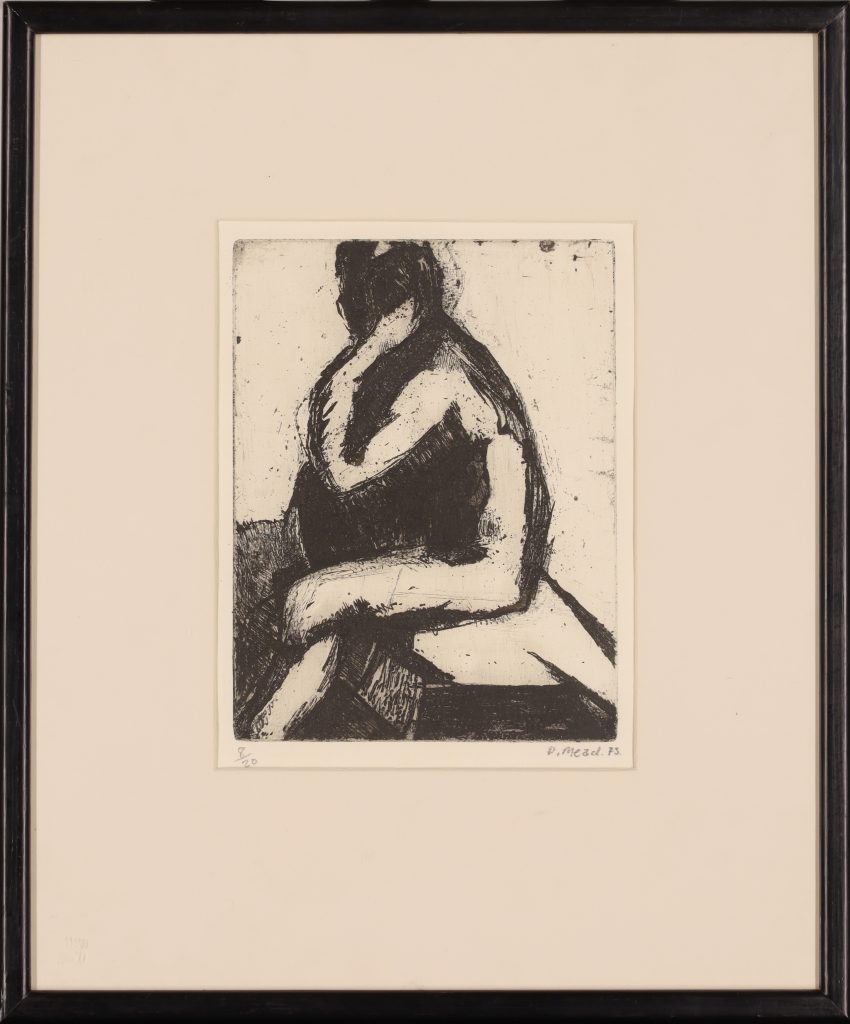
In 1958 Mead won the Slade’s prize for Figure Painting and then the Steer Prize for Landscape Painting. Mead became the first woman president of the Slade’s student exhibiting society, the Young Contemporaries. The next year Mead became at loggerheads with the principle William Coldstream as she refused to take the Slade’s course on perspective, likely thinking it would damage her work and go against the teachings of Bomberg she said “perspective has no place in art” and wrote a thesis on that aim, but it was refused, so she was asked to leave the Slade. In 1960 a similar argument broke out at the Royal College of Art between Robin Darwin and student David Hockney over the latter’s refusal to complete the general studies course.
Unabashed she exhibited that year in a touring exhibition Figure Variations in Paris, London the USA touring exhibition British Aquarelles. The triumph in face of the Slade’s rejection came in 1964 when the Arts Council England created a touring exhibitions titled ‘Six Young Painters’, Dorothy exhibited alongside artists including Peter Blake, William Crozier, David Hockney, Bridget Riley and Euan Uglow and if it wasn’t for her early death in 1975, today it’s likely she would have been as famous as they are. In 1959 Mead joined the London Group of artists, and was their first female president holding the chair from 1971-1973.
John Russell Taylor – The Painter’s Quarry: The Art of Peter Prendergast
Mead lectured and taught Goldsmiths as a guest lecturer from 1964, at Morley College (1963-65 & 1973-75) and Chelsea College of Art (1962 -64). She worked in landscapes and figure paintings and towards the end of her life started to experiment with still life and Egyptian scenes, likely after seeing The Treasures of Tutankhamun exhibit at the British Museum in 1972.
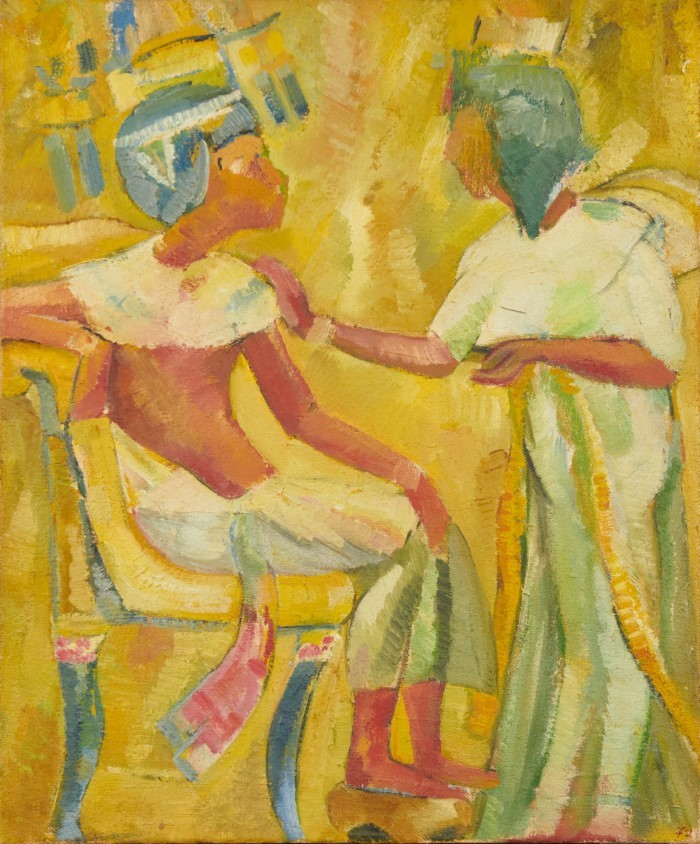
Dorothy Mead died in 1975 aged just 46. During her life she never had a solo exhibition and her work only really peaked the public’s curiosity in 1992 at the exhibition Bomberg and his Students held at the South Bank University in 1992. Mead’s first retrospective came in 2005 at the Boundary Gallery and then a studio sale of works belonging to one of her sisters Val at Waterhouse & Dodd in 2013.
David Sylvester remarked she “tends to affirm the supremacy of light, as women’s painting often does.” While Holden, her ex-partner said “Dorothy sticks to her principals, but like myself and Bomberg was an outsider.”
Seventeen of her works are held by the London South Bank University as part of the Sarah Rose collection of works by Bomberg and his pupils, other works are in the Tate, the Government Art Collection, the Arts Council Collection.
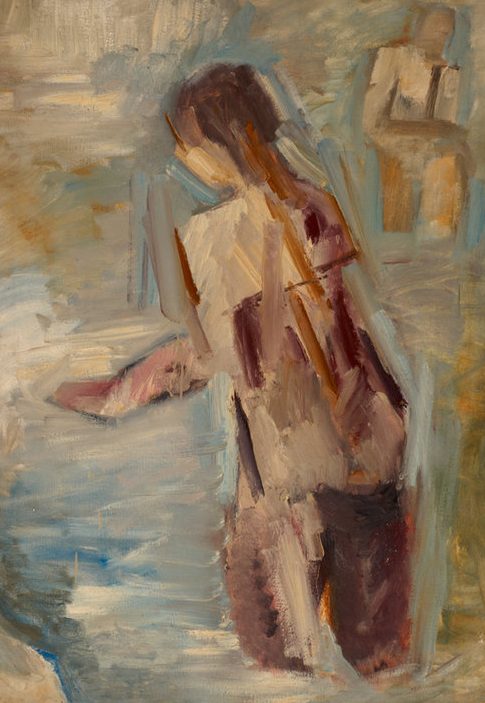
The Sarah Rose Collection at London South Bank University
Around the time of the retrospectives, a rumour started that some of Mead’s paintings were stolen after her death, although no evidence to substantiate this or it’s origin.
Philip Vann – Dorothy Mead, 2014
† Alicia Foster – Tate Women Artists, 2004
